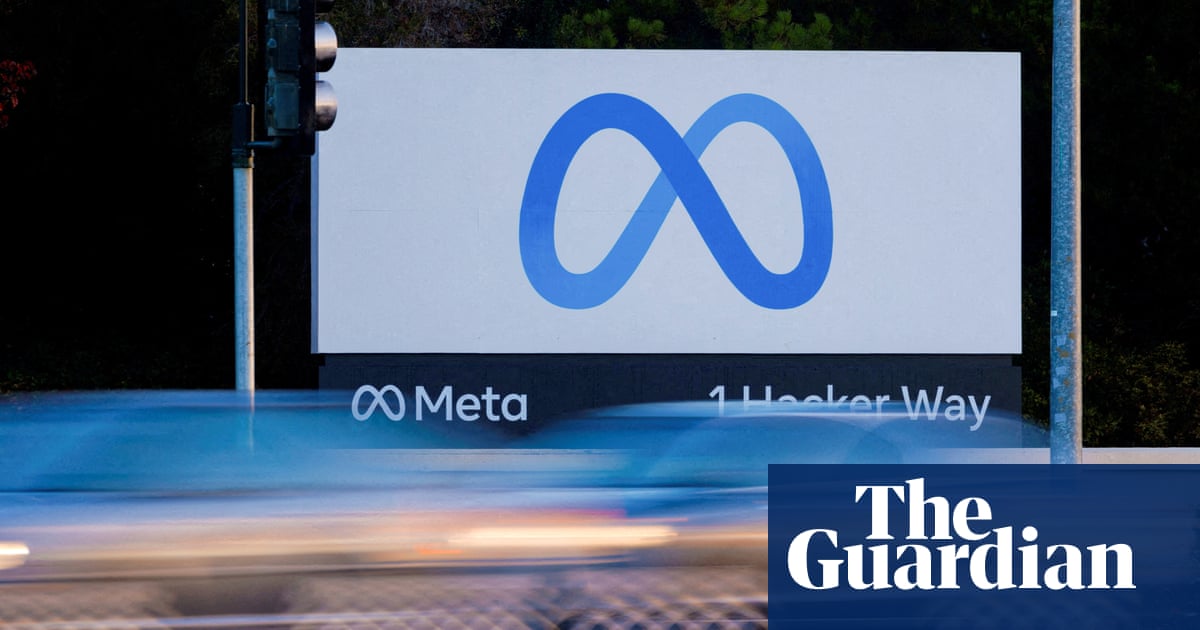- AI Bytes Newsletter
- Posts
- AI Bytes Newsletter Issue #32
AI Bytes Newsletter Issue #32
Do we need to be nice to AI?, ElevenLabs' reader app, Avoiding common AI pitfalls, implications of deepfake technology, Tavus - the world’s fastest conversational video interface for developers and a critical look at how businesses are positioning themselves in an AI market

Welcome to the 32nd Edition of the AI Bytes Newsletter! In this edition, we’re focusing on Mike's insights into navigating common AI pitfalls to help you achieve smarter success in your projects. We’re also excited to highlight the global launch of ElevenLabs' Reader app, which is transforming how we consume written content through AI-generated voices. Our ethical spotlight examines the implications of deepfake technology, sparked by recent incidents involving AI-generated political endorsements. Plus, we introduce Tavus, the world’s fastest conversational video interface for developers, offering dynamic, real-time personalized video content. Rico's Roundup this week takes a critical look at how businesses are positioning themselves in the AI landscape, with some embracing it fully while others, like Procreate, choose to stand apart. Lastly, don’t miss Mike’s favorite feature on whether being nice to AI influences its behavior, a topic that could shape the future of human-AI collaboration. Let’s explore these stories and more as we stay updated on the latest in AI together!
The Latest in AI
A Look into the Heart of AI
Featured Innovation
ElevenLabs Unveils Global Reader App: A New Era for AI-Generated Voice Content
We have both utilized and covered the many applications of ElevenLabs' products numerous times, and we are still thrilled to bring you this update on their continued progress in the technology world. ElevenLabs has launched its Reader app globally, offering a new way for users to consume written content through AI-generated voices. The app allows users to upload or link to text, which is then read aloud by AI voices that can mimic human intonation and emotion with impressive accuracy. This innovation aims to make content more accessible and engaging, particularly for those who prefer auditory learning or have visual impairments. If you have observed any of our application of their services, you would agree that it surely brings writing and narration to life in a way that was not so easily available to the every-person.
The Reader app is built on ElevenLabs' proprietary AI voice technology, which has been praised for its natural-sounding output. Users can choose from a variety of voices or even create custom ones, adding a personal touch to their listening experience. The global rollout signals ElevenLabs' confidence in its product and its commitment to providing a seamless, user-friendly experience for a diverse audience. This app could significantly impact how we interact with written content, making it more versatile and inclusive.
Ethical Considerations & Real-World Impact
Navigating the Ethical Landscape of Deepfakes: Balancing Innovation and Responsibility
Let's preface this by taking the actors in this story out of the equation and focusing solely on the activity itself—the ethical considerations and real-world impacts that deepfakes have had, are having, and will have in our future, both nationally and globally. A recent incident involving an AI-generated video depicting former President Donald Trump endorsing Taylor Swift has brought these issues to the forefront. The video, which went viral, was created using deepfake technology to simulate Trump’s voice and appearance, raising concerns about the potential for AI-generated content to mislead the public. This incident has sparked a debate about the legal and ethical implications of deepfakes, particularly in the context of political endorsements and public influence.
This comes after the recent hubbub over Elon Musk posting a parody video of what appeared to be a Kamala Harris campaign video, which has further stirred the debate around AI-generated content. These developments highlight the need to view deepfakes not only through a legal lens—considering intent and the elements of alleged crimes (if they exist)—but also with a healthy dose of common sense. We must also ensure that the First Amendment remains intact, allowing citizens, artists, comedians, and others to freely express themselves by utilizing this newly evolving tech. Of course, there will always be lines to cross, which is why we need some semblance of a thoughtful framework that addresses both the potential dangers and the cultural value of AI-generated media, ensuring that humor and creativity can coexist with responsible use of technology.
Ultimately, the future of AI-generated content, including deepfakes, depends on our collective ability to manage its risks while celebrating its potential. By creating frameworks that protect both the integrity of information and the rights of individuals to express themselves, we can pave the way for a future where technology enriches our lives without compromising our values.
AI Tool of the Week - Tavus
The Toolbox for using AI effectively
Tavus' Conversational Video Interface
This week, we spotlight Tavus, which has just introduced what it claims to be the world’s fastest conversational video interface designed specifically for developers. This cutting-edge tool allows developers to seamlessly integrate conversational videos into their applications, offering a new level of interactivity and personalization. By leveraging AI, Tavus enables dynamic video content that can adapt in real-time based on user interactions, making it a powerful tool for enhancing user engagement.
Tavus' interface is designed with speed and efficiency in mind, boasting a streamlined API that developers can easily implement into their projects. The tool’s ability to generate personalized video content on the fly opens up a range of possibilities, from customized customer service interactions to tailored marketing campaigns. This innovation is particularly beneficial for developers looking to create more immersive and responsive user experiences without sacrificing performance.
In a world where personalization is increasingly important, Tavus stands out as a versatile and impactful tool for developers. By offering the fastest conversational video interface on the market, Tavus is setting a new standard for how AI can be used to create engaging, interactive content that resonates with users on a personal level. Let us know what you think!
Rico's Roundup
Critical Insights and Curated Content from Rico
Skeptics Corner
Navigating the AI Divide: How Businesses Will Compete in a Tech-Driven Future
This article raised a few questions for me, particularly regarding the business and tech world’s, and how competition will be perceived in the rapidly evolving landscape of AI tools, both now and in the near future.
Procreate's recent announcement to stay away from generative AI raises intriguing questions about the future landscape of business competition. Through conversations with founders, CEOs, employees, and business owners, we've observed varying levels of AI adoption: some rely heavily on it, others have merely dabbled, while some remain curious but hesitant. Initially, interest in AI tools often revolves around reducing redundant tasks. However, Procreate's decision to avoid AI, far from being a throwback, represents a strategic move that sets them apart. They're betting on a niche that values human creativity and traditional methods over automation.
As AI continues to evolve, the business world is likely to witness a significant split. Some companies will fully embrace AI, leveraging it to enhance efficiency, innovation, and customer experience. These businesses may develop faster, more personalized products, gaining a competitive edge in markets where speed and customization are paramount. Conversely, companies like Procreate will cater to a different demographic; those who prioritize authenticity, human touch, and craftsmanship. This diversification creates a market where businesses can thrive either by leveraging AI or by standing firmly against it, depending on their target audience and core values.
However, the integration of AI into business practices isn't without risks. As more companies adopt AI technologies, they become potential targets for nefarious actors. AI systems can be vulnerable to hacking, data breaches, and misuse, making cybersecurity a top priority. Industries dealing with sensitive data, such as finance and healthcare, face particularly high stakes. These sectors will need to implement robust defenses to protect against AI-driven attacks, which could range from sophisticated deepfakes to advanced phishing schemes.
The business landscape is thus evolving towards a more polarized environment, where companies will either become AI innovators or champions of human-centric practices. Competition will be fierce, but success will hinge on understanding market dynamics and building strong security measures, whether around AI systems or traditional practices. This shift won’t merely be about adopting or rejecting AI; it'll be about how businesses navigate the complexities and opportunities presented by this technological revolution.
Ultimately, the companies that succeed will be those that make clear, strategic decisions about their stance on AI and effectively protect their chosen approach in an increasingly digital world. As we watch this play out, we can expect to see a diverse ecosystem where both AI-driven innovation and human-centric craftsmanship can thrive, catering to different market segments and consumer values. This new landscape offers both challenges and opportunities, reshaping the very nature of business competition in the age of artificial intelligence.
Must-Read Articles
Mike's Musings
AI Tip - Avoiding Common Pitfalls for Smarter Success!
Hey Folks! This week, we're breaking down the common mistakes in AI use and sharing how to steer clear of them for better success.
(REPEATED) WARNING: Be careful what you share with chatbots and AI tools. Strip sensitive data or PII (personally identifying information) out of emails if you are using the free version of ChatGPT or other tools. I’m currently using ChatGPT Team which touts it’s privacy and… even still, I’m careful with what I share.
AI is shaking things up across industries, and there's no denying its potential. But like any powerful tool, it’s all about how you use it. There are a few common traps professionals can fall into when integrating AI, and I want to highlight these to help you avoid them and make the most of what AI can offer.
1. Over-reliance on AI at the Expense of Human Expertise
The Risk: AI is incredible for crunching numbers, spotting patterns, and even making predictions. But let’s not forget—it’s still just a tool. AI doesn’t have the intuition or the depth of experience that humans bring to the table. If you lean too heavily on AI without checking its outputs against your team’s insights, you could be making decisions that miss the mark.
The Solution: Use AI as a partner, not a replacement. Combine the strengths of AI—speed, efficiency, and data handling—with the creativity and critical thinking of your human team. AI can handle the heavy lifting on data, but the final call should always involve human judgment.
2. Expecting AI to Generate Final, Polished Creative Work
The Risk: AI can spit out a draft or a concept in seconds, but let’s be honest—it’s not going to win any awards for originality or polish. As we have said on the show so many times, if you’re expecting AI to deliver a finished product, you’re likely to end up disappointed with the results.
The Solution: Think of AI as your brainstorming buddy. Let it help you get started, but don’t let it do all the work. The magic happens when you take that raw AI output and refine it, infusing it with your brand’s voice and the unique touch that only a human can provide. That’s how you maintain quality and ensure your creative work stands out.
3. Believing AI is the Universal Solution
The Risk: It’s tempting to throw AI at every problem, especially when you see it working wonders in one area. But not every task needs AI, and using it where it doesn’t belong can actually slow you down or cause more problems than it solves.
The Solution: Be strategic. Before you bring AI into a project, ask yourself, “Is this really where AI shines?” Focus on using AI for what it’s best at—automating repetitive tasks, processing large datasets, and speeding up workflows. For more nuanced tasks, you might find that traditional methods still do the job better.
Maximizing AI’s Potential: A Strategic Approach
AI can be a game and life-changer, but only if you know where and how to use it. Here’s my take on a smart strategy for integrating AI into your workflow:
Strategic Integration:
Start by identifying the tasks that eat up a lot of time and don’t require a lot of creative input. These are prime candidates for AI. Let AI handle the grunt work, like data entry, initial content drafts, or customer support queries, so your team can focus on the bigger picture.
When it comes to complex projects, bring AI into the mix early—let it analyze data or generate ideas—but make sure the final output gets a human touch. This way, you get the best of both worlds: AI’s efficiency and human quality control.
AI as a Creative Catalyst:
Use AI to kickstart your creative process. Whether it’s generating ideas for a marketing campaign or drafting an outline for a new project, AI can give you a head start. But remember, the final product should always be a result of human refinement and decision-making.
Think of AI as a tool to expand your creative horizons, not as a substitute for your creative instincts. AI can produce a lot of ideas quickly, but it’s your job to sift through them and pick out the gems.
Continuous Evaluation:
The AI landscape is constantly evolving, so it’s important to regularly assess how you’re using AI and whether it’s still the best tool for the job. Stay updated on the latest advancements and be ready to pivot if something better comes along.
Don’t get too comfortable—keep questioning whether AI is the right tool for the task at hand. Technology moves fast, and what works today might not be the best solution tomorrow.
The Bottom Line: Balance AI with Human Ingenuity
AI is powerful, but it’s not a silver bullet. Its real value comes from how well it complements human intelligence. Avoid the common mistakes of over-reliance, unrealistic expectations, and misapplication, and instead, use AI to enhance your team’s capabilities, not replace them.
By leveraging AI for what it does best—handling data, automating tasks, and generating initial ideas—you free up your team to focus on the creative problem-solving and strategic thinking that make your work truly exceptional. As we always say, you have got to have the human side of AI.
Mike’s Favorite
Video: Do you have to be nice to AI?
This is an good one… a study by Beijing Normal University produced some interesting results around how we interact with AI and how it reacts to us.
Lance Carlson unpacks this a bit in his video Do you have to be nice to AI?

Another article, digs into this as well: https://foundationinc.co/lab/emotionprompts-llm, below is an image of some of the results.

As AI continues to evolve, how might this impact your professional use of AI tools? Are we on the cusp of a new era in human-AI collaboration?
If you’ve got something you think I’d like, hit me up at [email protected]
Latest Podcast Episode
Connect & Share
Stay Updated
Subscribe on YouTube for more AI Bytes.
Follow on LinkedIn for insights.
Catch every podcast episode on streaming platforms.
Thank You!
Thanks to our listeners and followers! Continue to explore AI with us. More at Artificial Antics (antics.tv).
Quote of the week: "We believe AI will change 100 percent of jobs, and that will require reskilling and new ways of working." — Ginni Rometty, Former CEO of IBM







